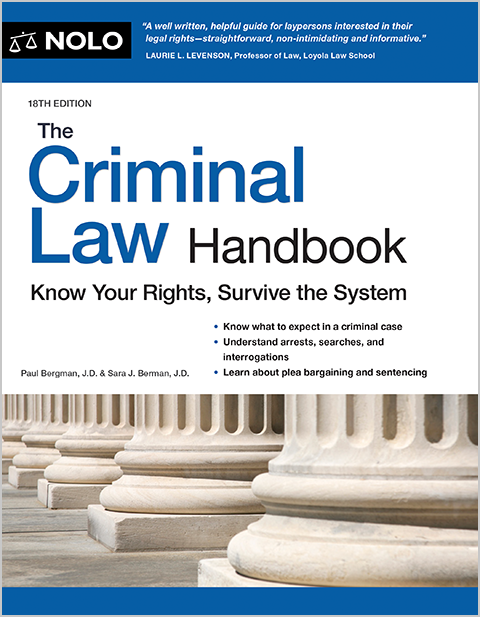Most (but not all) people with Hepatitis B are able to recover without having functional limitations, and thus aren't eligible for disability benefits.
Hepatitis B is an inflammatory disease of the liver that is caused by the HBV virus. HBV infection is very common—some estimates put 1 in every 3 people worldwide as having been infected with the virus at some point in their lives. Symptoms of hepatitis B include jaundice (yellowing of the skin and eyes), pruritis (itching), abdominal pain, joint pain, fatigue, sleep disturbances, and nausea.
People with strong immune systems who have been infected with HBV are usually able to fight the virus without any lasting effects. However, some people with hepatitis B have a lifelong chronic infection that can cause liver inflammation and scarring. Severe scarring of the liver (cirrhosis) can damage the organ's ability to function and in some instances can lead to liver failure. Chronic carriers of HBV are also at higher risk for liver cancer.
- Is Hepatitis B Considered a Disability?
- Getting Disability for Hepatitis B by Meeting a Listing
- Getting Disability With Limitations in Your Residual Functional Capacity
- Medical Evidence of Disability from Hepatitis B Infection
- Getting a VA Disability Rating for Hepatitis B
- How to File for Disability Benefits
Is Hepatitis B Considered a Disability?
Social Security awards disability benefits to people who are unable to work full-time for at least one year due to a medically determinable impairment. Because healthy individuals don't usually have long-term symptoms from hepatitis B, it's unlikely that you'll qualify with an acute (short-term) infection. But if you have a chronic infection of hepatitis B that causes significant complications or functional limitations, you may qualify for Social Security Disability Insurance (SSDI) or Supplemental Security Income (SSI).
Getting Disability for Hepatitis B by Meeting a Listing
Social Security determines whether you're disabled using a five-step method known as the sequential evaluation process. The agency first needs to see that you aren't working at or above the level of substantial gainful activity. Then, disability claims examiners will review your medical records to determine whether you have a severe (not insignificant) medical impairment. At the next step—step three—you may be able to get disability benefits by meeting a Blue Book listing.
The Blue Book—also known as the listing of impairments—is a category of medical conditions that Social Security considers especially severe. If you're diagnosed with a condition in the Blue Book and your record contains documentation of certain specific medical findings, the agency will award you benefits without needing to find out if any jobs exist that you can still do.
Hepatitis B isn't a listed impairment, but if your complications from chronic HBV infection are severe enough, Social Security may conclude that you meet the requirements of listing 5.05 for chronic liver disease. Like most other listings in the Blue Book, the criteria to be found disabled under listing 5.05 are strict. You'll need to have laboratory findings showing greatly reduced liver functioning in order to get disability this way. (If you've had a liver transplant, the agency will find you disabled for at least one year after the date of the transplant under listing 5.09.)
Getting Disability With Limitations in Your Residual Functional Capacity
Even if you don't meet the requirements of a listing, you can still be found disabled if your residual functional capacity (RFC) keeps you from performing your past job or any other jobs. Your RFC is a set of restrictions, physical and mental, on what you can do in a work environment. Social Security will consider the following factors when developing your RFC:
- how long you can sit, stand, and walk on a daily basis
- how much you can lift, carry, push, or pull on a daily basis
- how well you can understand and follow instructions.
- how often you can interact with co-workers, supervisors, and the general public
- how well you can respond to work stress, and
- how long you can remain focused on work tasks.
Social Security will carefully review your medical records when deciding what to include in your RFC, so it's important that your doctor's notes contain sufficient evidence of your hepatitis B symptoms and how they limit your ability to perform the above activities. Based on this evidence, the agency will add exertional (strength-related) and nonexertional (mental and postural) restrictions to your RFC, which rule out the kinds of jobs you can do. Here's an example of an RFC made by a claims examiner or disability judge:
Once your RFC is assessed, Social Security compares it with the duties of your past jobs to see whether you could still do that work today and, if not, whether other jobs exist in the national economy that you could perform. If no jobs exist that you could do given your age, education, skills, and current RFC, you'll receive disability benefits. For claimants younger than 50, this typically means being unable to perform the easiest sit-down jobs, while claimants 50 and older may qualify even if they can do less demanding work under the medical-vocational grid rules.
Medical Evidence of Disability from Hepatitis B Infection
When a Social Security claims examiner is first handed your disability application, the examiner will order copies of your medical records and review them for information about your hepatitis B infection. Examples of information that the examiner will be looking for includes:
- a liver biopsy showing the degree of liver infection
- imaging studies such as an MRI, CAT scan, or ultrasound to indicate whether the liver has increased in size (hepatomegaly) or has been scarred
- lab tests that reveal the level of liver enzymes and serum albumin (a protein produced by the liver) in your blood
- common treatments for HBV such as injections of interferon (proteins that help the body's immune system fight infections) or oral antiviral drugs
- physical examinations showing abnormal reflexes or reduced range of motion, and
- clinical progress notes with your doctor's observations about your health.
Statements you make to your doctor indicating the level of fatigue or pain that you feel during various activities can be used to support a lower RFC level. You should discuss with your doctor such topics as needing to rest during the day, difficulties with everyday household chores, fluctuations in appetite, whether you're getting enough sleep, and the extent to which your level of activity has changed since before you were diagnosed with hepatitis B.
Social Security will also look to see if you're dealing with any side effects as a result of your medications. For example, common side effects from treatment for hepatitis B can include fever, fatigue, joint pain, nausea, insomnia, or other flu-like symptoms. These side effects can impact your ability to work on a regular basis and should not be left out of your RFC.
If you don't currently have medical insurance or can't afford a doctor, Social Security might send you to a consultative examination on the agency's dime. During this exam, you should explain your symptoms and follow any instructions given by the doctor. Don't ignore the notices for any scheduled consultative examinations—failure to attend them can result in your application being denied.
Getting a VA Disability Rating for Hepatitis B
Veterans who have chronic liver damage from service-connected hepatitis B may also be eligible for disability compensation from the VA. Veterans with cirrhosis of the liver (diagnostic code 7312 in the VA Schedule for Rating Disabilities) can receive a disability percentage rating of 10%, 30%, 60%, or 100%, depending on how severe the liver damage is. Veterans who have chronic liver disease without cirrhosis (diagnostic code 7345) can get a disability rating of 20%, 40%, 60%, or 100%, again correlating to the extent and severity of the liver disease.
How to File for Disability Benefits
If you've decided to file for SSDI or SSI benefits, you have several options. You can submit an application online using Social Security's web portal, you can call the agency's national hotline at 800-772-1213 (TTY: 800-325-0778) from 8 a.m. to 7 p.m., Monday through Friday, or you can go to your nearest Social Security field office to apply in person.
Veterans wishing to obtain disability compensation need to file Form 21-526EZ, Application for Disability Compensation and Related Compensation Benefits. Many people find it easiest to fill out the electronic form online, but you also have several other options if you'd prefer to mail, fax, or personally deliver the form to the VA.
If you've already been denied disability benefits from the VA or Social Security, don't give up. Even if you aren't found disabled on your first (or even your second) try, you can appeal your denial to a Social Security administrative law judge or request higher-level review from the VA. At these stages, it's not a bad idea to get an experienced disability attorney or veterans' lawyer if you haven't already. Your lawyer can help you stay on top of appeals deadlines, gather necessary documents, and represent you before a judge or tribunal.
- Is Hepatitis B Considered a Disability?
- Getting Disability for Hepatitis B by Meeting a Listing
- Getting Disability With Limitations in Your Residual Functional Capacity
- Medical Evidence of Disability from Hepatitis B Infection
- Getting a VA Disability Rating for Hepatitis B
- How to File for Disability Benefits

